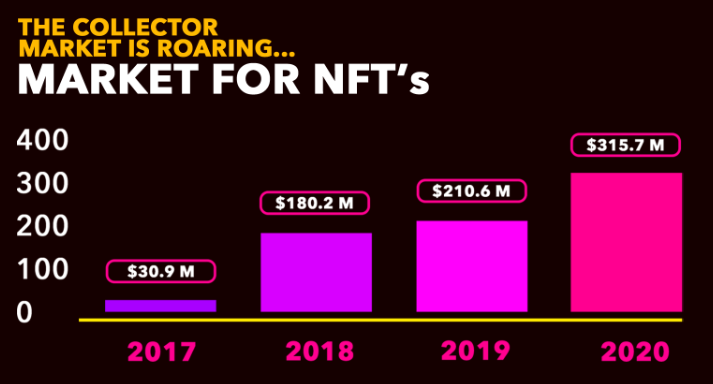The Rise of NFTs
Overview of the NFT Market and NFT Gaming
In the first quarter of 2021, Non-Fungible Tokens, or NFTs, have become a common name in crypto communities and projects. Their market capitalization has steadily increased and now stands at a tremendous rate. It is expected to skyrocket in the coming years as blockchain gaming and its user base expands. As a result, NFTs will become more widely adopted and wielded over time.
What is an NFT? What does NFT stand for?
Non-fungible token. Non-fungible means that it is one-of-a-kind and it certifies a digital asset to be unique and therefore not interchangeable. On the other hand, "fungible tokens" can be traded and exchanged for other cryptocurrencies and other fungible assets as a means of payment.
How do NFTs work?
One of the most common misconceptions is that NFTs are a type of cryptocurrency. They are both stored and recorded on a blockchain, but that’s about it in terms of similarity. Non-fungible tokens are unique, so it follows that their values are distinct. In contrast, cryptocurrencies such as Bitcoin and Ethereum have transparent values, usually measured in USD, so they can be traded for another. Simply put, my one bitcoin has the same values as your one bitcoin, but we can not say the same for NFTs. The value of NFTs comes from their uniqueness and collectability. Since these are assets, they can be sold and traded in the future for a profit.
How to Buy NFTs?
If you are perceptive and want to start your NFT collection, you'll need a set of items. To begin, you must obtain a digital wallet that allows you to store both NFTs and cryptocurrencies. Then, depending on which currencies your NFT provider accepts. You must purchase some cryptocurrencies and use them to exchange digital assets in an NFT Marketplace. You can even purchase cryptocurrency directly with a debit or credit card on different platforms such as Coinbase, Kraken, eToro, and even PayPal.
Last updated
